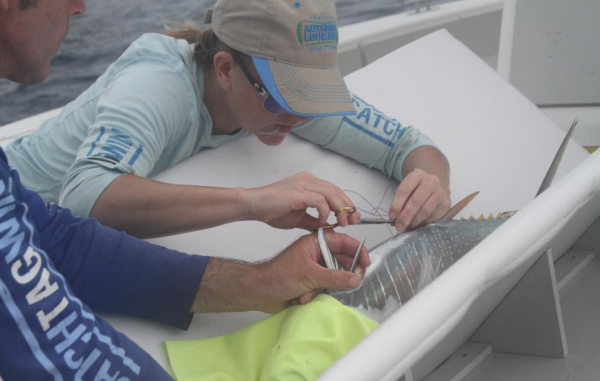
Anglers who return electronic tags will receive $200 Academy gift card
Reeling in a big yellowfin is rewarding in itself, but if you’re lucky enough to catch a fish involved in a Louisiana Department of Wildlife and Fisheries research project, you’ll get more than just a nice tuna steak.
“The holy grail of these electronic tags is the detailed data they record,” said Randy Pausina, head of fisheries for the department. “But LDWF researchers can only access that level of information if they get the tag back.”
The department has inserted electronic tags in more than 1,000 fish since the project began in June of 2013 in an effort to learn more about yellowfin tuna movements and habitat use in the Gulf of Mexico.
Individuals who return an intact electronic tag will receive a $200 Academy Sport and Outdoors gift card, according to a press release.
Tuna included in the study not only have an electronic tag in their abdominal cavity, but a conventional green and white tag at the base of their second dorsal fin. The internal tags record a range of parameters every 30 seconds, including depth, light intensity, water temperature and the internal temperature of the fish.
If you catch a tagged yellowfin tuna, follow these steps:
1. Record the date, time and catch location (GPS coordinates).
2. Measure fork length, weight and take photos of the surgical site (if possible).
3. Carefully remove the tag from the fish. The light stalk, which can be seen protruding from the abdomen of the fish, must remain connected with the tag body inside the fish.
4. Call the reward line at (855) 728-8247 or email sattag@wlf.la.gov to arrange for pickup of the tag.
Since the study began, more than 1,000 fish have been tagged, with about a 10-percent recapture rate. According to the release, the greatest movement by a single yellowfin was 155 nautical miles after 417 days at large.
The department will continue the study over the next few years, and the resulting data hopefully will indicate habitat preferences and feeding and spawning behavior.
Findings will greatly improve the body of knowledge of the yellowfin tuna resource in the Gulf of Mexico and its connectivity with the Atlantic-wide population, resulting in improved stock assessments and fishery management, the release states.


